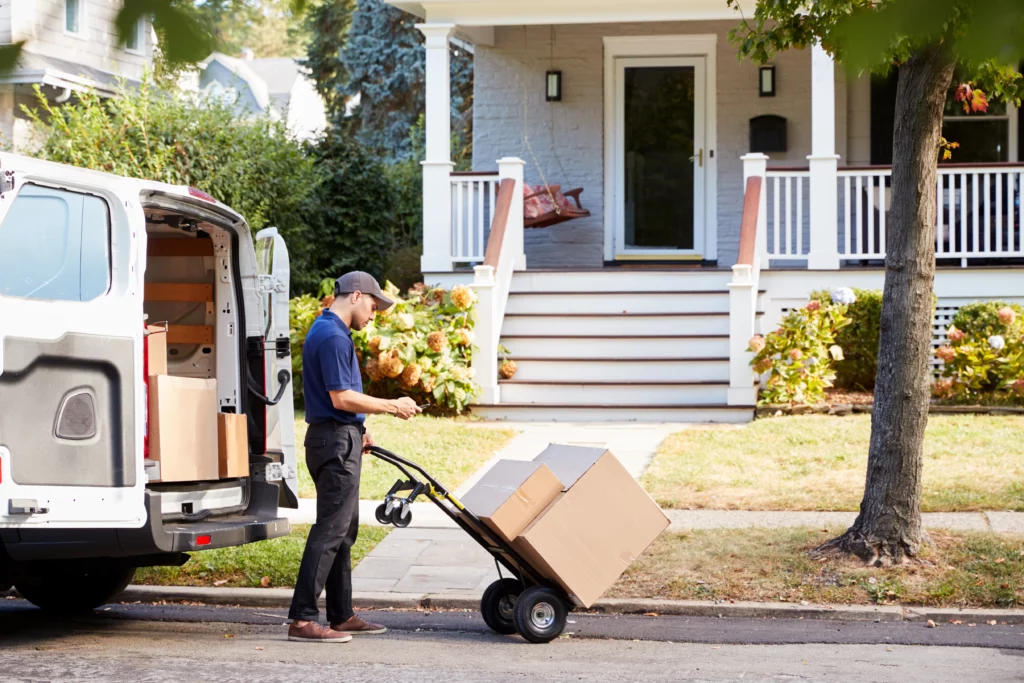The Rise of eCommerce Marketplaces and What It Means for Your Customer Relationships

While many brands and online retailers offer their products through their own websites and platforms, online marketplaces are on the rise. They provide businesses and microsellers with the means to sell their products without spending time and money building their own selling platform, or they can be a secondary channel.
In fact, a whopping 47% of digital purchases were made via online marketplaces in 2019 and this is forecasted to grow exponentially. Their popularity among consumers has left some retailers with a “if you can’t beat em, join em” mentality but others are wary — and with good reason.
While online marketplaces offer some immediate benefits, they can also fundamentally change the experience and relationship your customer has with your brand. And that change often benefits the marketplace instead of your business. This dynamic leaves merchants wondering if they should launch a direct to consumer (D2C) site, sell on third party marketplaces, or launch their own online marketplace. For some, the answer is all of the above
In this article we’ll look at some customer experience pros and cons of online marketplaces, in comparison to two other popular options that include delivery as part of the offering:
- building an ecommerce site with integrated on demand delivery
- launching your own marketplace with integrated on demand delivery
As the discussion will show, it’s challenging for third party marketplaces to compete with these other two options when it comes to the customer delivery experience.
What is an Online Marketplace?
Marketplaces are online ecommerce sites that bring buyers and third party sellers together in one place. When we think of online marketplaces, for most of us Amazon is top of mind. But retail B2C focused marketplaces are popular all over the world — from the giants like Alibaba and Taoboa, to more niche sites like Etsy, Cratejoy, and Newegg. B2B and P2P (peer to peer) sites also enjoy broad popularity. Today, we are seeing online marketplaces pop up in other industries outside of retail, from finance to the nonprofit sector — and even the building materials industry.
The Benefits of Using Online Marketplaces
For many retailers, online marketplaces have been a primary or even secondary lifeline — especially during the covid19 pandemic. As physical stores were required to close, many businesses had to quickly pivot their business model and find a new or supplemental solution to survive. Online marketplaces offered a quick and easy way to make their products available to a larger audience of potential customers. Beyond the access to online customers that marketplaces have provided during the pandemic, there are other clear benefits for brands and retailers.
1. Turn Key eCommerce Sites
While setting up an ecommerce store is easier than ever thanks to tech companies like Shopify and WooCommerce, online marketplaces offer an appealing one stop shop. They take care of payments, security, product listings, and even the shipping for you — so it’s easy to get started quickly.
2. High Volumes of Customer Traffic
Another key benefit of using an online marketplace is the high volume of customer traffic that can find you because they are already coming to the site. Marketplaces have deep marketing budgets and advertising on Google already queued up — which means there should be high intent traffic hitting your store pages.

3. Delivery
One of the things marketplaces have been most successful at is changing customer expectations around delivery speed. They’ve shortened competitive delivery times from weeks to the next day. And that can be hard to compete with if you are a standalone business.
If you don’t have a reliable last mile partner, delivery is one of the biggest benefits that online marketplaces can offer. But not all marketplaces are created equal. From a delivery perspective, there are two broad categories of marketplaces that offer different experiences.
The first category aggregates many retailers and multiple delivery services on one platform, which essentially means brands can offer their customers more options in terms of when they receive their goods and how much they pay for delivery. In this scenario, retailers are better able to offer a delivery experience that matches their customers’ expectations.
The second category offers retailers and their customers little choice to no choice in last mile delivery. Instead of creating a marketplace of on demand delivery partners, these marketplaces use their own pools of drivers, while others rely on traditional carriers and postal services to deliver your goods. In most cases, your customers’ options are limited, and you lose control of their delivery experience when they buy your products.
The Cost of Using Certain Online Marketplaces: Your Relationship with Your Customers
While online marketplaces offer retailers ease of doing business, some also come with downsides. Chief among these is a loss of control over your customer experience. This applies to your customers’ online experience as well as their delivery experience.
In some situations, when a customer buys from an online marketplace, the marketplace earns their loyalty, not you and your brand. Let’s take Amazon as an example; how often do you remember the brand of the product you bought? You likely just remember you bought it on Amazon. And you’ll probably go back to Amazon to order it again, instead of the brand’s website.
In other situations, customers seek out online marketplaces to buy specific brands — for the best price, the right size or color, international shipping, and other reasons. If your customer has a poor experience in this situation, your brand is tainted because they were seeking your brand. Browsing, checkout, and customer support experiences are all predetermined by the marketplace and not typically in your control. If your brand prides itself on quality customer service, it might be challenging to control and maintain that experience through an online marketplace.

Similarly, if a marketplace offers a poor delivery experience, your brand suffers. Research shows that 84% of customers will not buy from a business after a single bad delivery experience. That delivery experience is an extension of your brand as well as the marketplace’s brand. You need to ensure you’re delighting your customers with every brand interaction including delivery, through features such as flexible service levels, the right vehicle for every job, professional drivers, and contactless delivery.
What Are the Alternatives?
If you want to serve your customers online, where they’re spending more and more of their time, first consider tools like Shopify or WooCommerce to build your own ecommerce store. Today these ecommerce partners offer more than just a storefront; they come with all the trimmings too — robust reporting, social media integrations, SEO tools, and even ad integrations. This still provides you with an easy and quick to market opportunity. And it gives you more control over the customer experience all the way to the delivery door.
Once you have your ecommerce store set up, partner with an on-demand logistics provider to handle your delivery. You’ll be able to offer the same or better delivery options than most ecommerce marketplaces offer. And you’ll have full control of your customers’ experience, data, and loyalty. Leading on demand providers offer features such as end to end delivery tracking, robust reporting, and seamless integration with other systems. These features help ensure you have full control of your customers’ experience, data, and loyalty.

If you want to complement your owned digital storefront with additional online channels and offer your customers more choice and convenience, marketplaces can be part of your retail strategy. Direct to customer (D2C) sites and third party marketplaces can work together. In fact, technology partners such as VTEX can help retailers build their own ecommerce site, sell on third party marketplaces, and even launch their own marketplace.
Consider launching your own marketplace; while it will require more effort than joining a third party marketplace, this approach will allow you to maintain more control over your customer experience, including your delivery experience, and unlock new revenue opportunities for your business. As a last resort, you could add a third-party marketplace to your channel strategy, but be sure to choose a marketplace that values the delivery experience as part of the customer experience and offers consumers a choice of on demand delivery options. Pay careful attention to the last mile delivery model that every marketplace offers and ensure they’re providing the most flexibility and the best value for your customers.
The Bottom Line
Online marketplaces are fine when you need to get online quickly and/or add an additional selling channel. But they can also limit your ability to build brand loyalty and elevate your brand and customer experience from start to finish. Explore all your options, including launching a branded ecommerce solution or online marketplace of your own, and partnering with an on demand logistics provider that can act as an extension to your brand and can deliver faster, smarter, and cost effectively.
